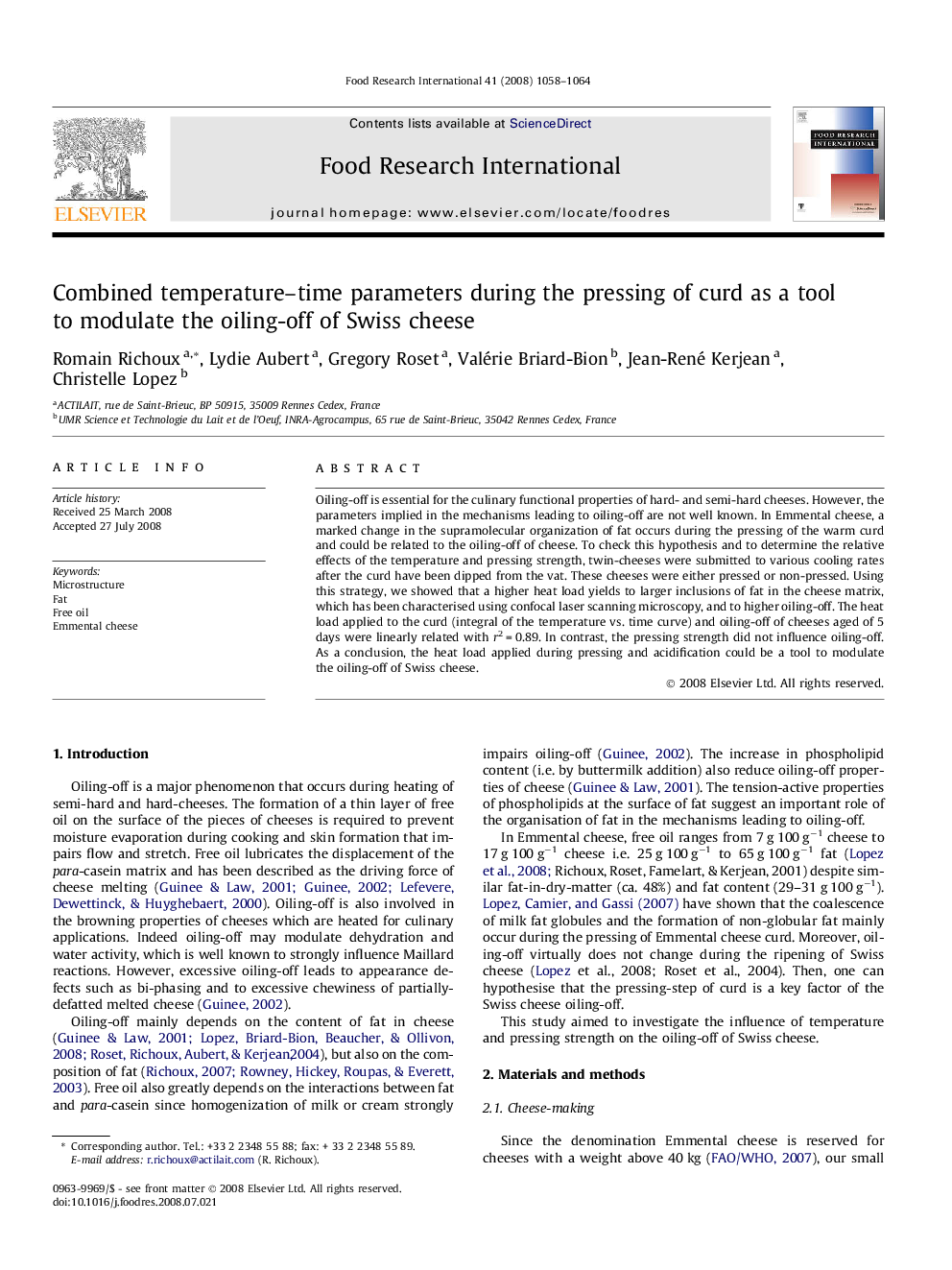| کد مقاله | کد نشریه | سال انتشار | مقاله انگلیسی | نسخه تمام متن |
|---|---|---|---|---|
| 4561975 | 1330697 | 2008 | 7 صفحه PDF | دانلود رایگان |

Oiling-off is essential for the culinary functional properties of hard- and semi-hard cheeses. However, the parameters implied in the mechanisms leading to oiling-off are not well known. In Emmental cheese, a marked change in the supramolecular organization of fat occurs during the pressing of the warm curd and could be related to the oiling-off of cheese. To check this hypothesis and to determine the relative effects of the temperature and pressing strength, twin-cheeses were submitted to various cooling rates after the curd have been dipped from the vat. These cheeses were either pressed or non-pressed. Using this strategy, we showed that a higher heat load yields to larger inclusions of fat in the cheese matrix, which has been characterised using confocal laser scanning microscopy, and to higher oiling-off. The heat load applied to the curd (integral of the temperature vs. time curve) and oiling-off of cheeses aged of 5 days were linearly related with r2 = 0.89. In contrast, the pressing strength did not influence oiling-off. As a conclusion, the heat load applied during pressing and acidification could be a tool to modulate the oiling-off of Swiss cheese.
Journal: Food Research International - Volume 41, Issue 10, December 2008, Pages 1058–1064